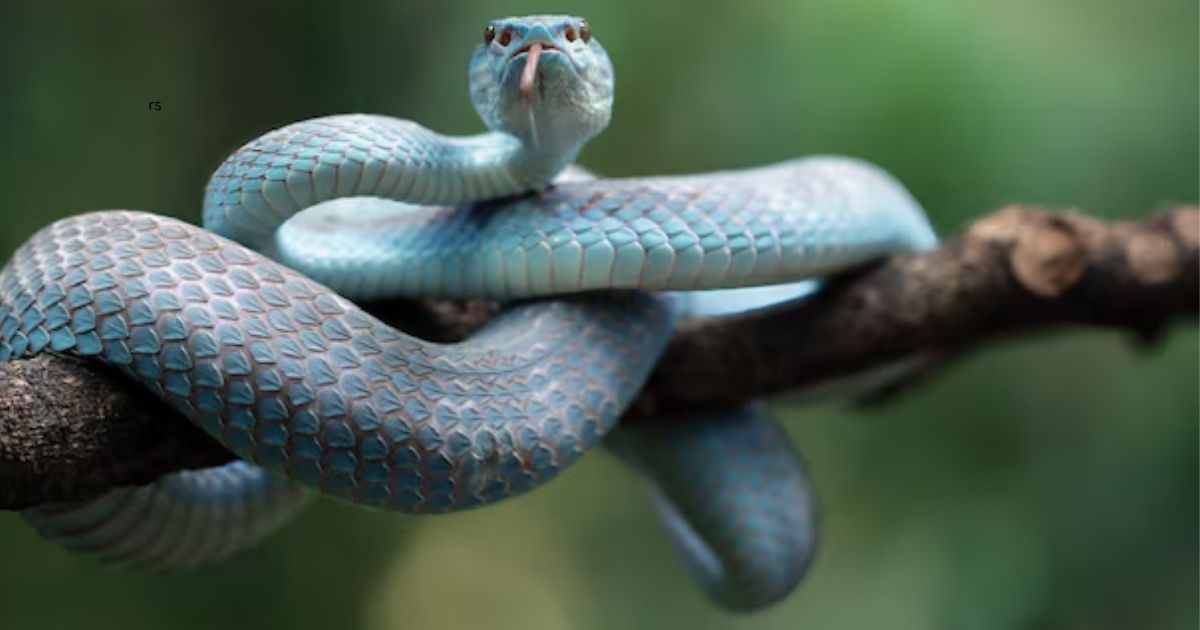Snakes are among the most intriguing creatures on Earth, often evoking fear and fascination in equal measure. Their sleek, slithering movements, the eerie way they silently stalk prey, and their incredible diversity make them one of the most captivating animals in the natural world. From deserts to rainforests, and even in urban environments, it thrive in a variety of ecosystems. This article delves into the fascinating world of snakes, discussing their characteristics, habitats, diet, and their important role in ecosystems.
What Are Snakes?
Snakes are legless, elongated reptiles that belong to the suborder Serpentes. They are ectothermic (cold-blooded), meaning their body temperature is regulated by the surrounding environment. With over 3,000 species worldwide, snakes vary greatly in size, from tiny, thread-like species to massive ones like the anaconda and the reticulated python. While many people associate snakes with danger, only about 600 species are venomous, and a much smaller number pose a serious threat to humans.
Anatomy and Physical Traits
The snake’s unique body shape and movement are the result of specialized anatomical features. Their skeletons are composed mainly of vertebrae and ribs, giving them their signature flexibility. Unlike other reptiles, snakes lack eyelids and external ears, relying on their forked tongues and Jacobson’s organ to detect chemical signals in the air, helping them “taste” their surroundings.
How Snakes Move
Snakes use several types of locomotion to get around. The most common is lateral undulation, where they move in an S-shaped curve. However, they can also use rectilinear motion, where their belly muscles contract and push them forward in a straight line, a method often used by heavy-bodied species. In rare cases, some snakes employ sidewinding, especially when moving on loose sand or gravel.
Habitat and Distribution
Snakes are highly adaptable and are found on every continent except Antarctica. They live in a wide range of habitats, from dense rainforests and arid deserts to grasslands, marshes, and even in and around human settlements. Some species, like the sea snake, have adapted to aquatic environments, while others, like the tree-dwelling green mamba, live almost exclusively in the canopy of forests.
Diet and Hunting Techniques
They are carnivorous and have evolved to hunt a wide variety of prey, including rodents, birds, frogs, and even other snakes. Some, like the king cobra, specialize in eating other snakes. they are generally classified as either constrictors or venomous.
Constrictors, such as pythons and boas, kill their prey by wrapping their bodies around it and squeezing until it suffocates. Venomous snakes, like cobras, vipers, and rattlesnakes, inject venom through specialized fangs to immobilize or kill their prey before consuming it. Despite these different hunting techniques, all snakes swallow their prey whole, their flexible jaws allowing them to consume animals much larger than their head.
Snake Venom: A Powerful Tool
Venomous snakes are equipped with glands that produce toxins. These toxins can have various effects, ranging from neurotoxins that affect the nervous system to hemotoxins that disrupt blood clotting. While snake venom is primarily used for hunting, it can also serve as a defense mechanism against predators. The potency of venom varies between species, with some snakes delivering bites that can be fatal to humans if untreated, such as the black mamba or the inland taipan.
Snake Reproduction
Most snake species reproduce through internal fertilization. There are two main reproductive methods: oviparous (egg-laying) and viviparous (live-bearing). Oviparous species, such as pythons and king cobras, lay eggs that hatch after an incubation period. Viviparous snakes, like some species of boas and vipers, give birth to live young. Interestingly, some are capable of parthenogenesis, a process where females can produce offspring without mating.
Role in the Ecosystem
They play a crucial role in maintaining the balance of ecosystems. As predators, they help control populations of small mammals, birds, and insects, preventing overpopulation and the spread of disease. In turn, snakes serve as prey for larger animals like birds of prey, large mammals, and even other snakes. Without snakes, many ecosystems would face significant imbalances, leading to crop damage and pest infestations.
Common Misconceptions About Snakes
There are many myths and misconceptions about snakes. One common myth is that all are dangerous, when in fact most are harmless to humans. Another is the idea that these are aggressive, but in reality, they are generally shy and will avoid human interaction unless provoked. Lastly, the belief that snakes are slimy is false; their scales are dry and smooth, designed to reduce friction as they move.
How to Stay Safe Around Snakes
While they are generally not a threat to humans, it’s important to take precautions, especially in areas where venomous species are common. Always be aware of your surroundings when hiking or working outdoors, and never try to handle a snake unless you are a trained professional. If you encounter a snake, give it space to retreat and avoid sudden movements. In case of a snake bite, seek medical attention immediately, especially if the snake is venomous.
The Importance of Snake Conservation
Many snake species are under threat due to habitat loss, climate change, and human activities. Deforestation, urbanization, and agricultural expansion destroy snake habitats, leaving them vulnerable to extinction. Additionally, snakes are often killed out of fear or for their skin. Conservation efforts are critical to preserving these important predators, ensuring that they continue to play their vital role in ecosystems worldwide.
Snakes in Culture and Mythology
They have played a prominent role in human culture and mythology for centuries. In many cultures, snakes are seen as symbols of rebirth and transformation due to their ability to shed their skin. However, they are also associated with danger and deceit, as seen in the biblical story of Adam and Eve. In other cultures, such as in ancient Egypt, they were revered as gods, symbolizing protection and royalty.
Why Snakes Are Important for Humans
Though often feared, they provide numerous benefits to humans. They help control pest populations, reducing the need for harmful pesticides. In some parts of the world, its venom is used in medical research to develop life-saving treatments for conditions like heart disease, blood clots, and cancer. they are also important in the study of evolution, as their unique adaptations provide valuable insights into how species evolve to survive in diverse environments.
Conclusion
They are more than just creatures to be feared; they are vital components of the natural world. Their adaptability, hunting prowess, and critical role in ecosystems make them fascinating subjects of study. By understanding and appreciating snakes, we can better protect them and the ecosystems they help maintain. The next time you see a snake, remember that it plays an important part in the balance of nature, and like all creatures, it deserves respect.
FAQs
Are all snakes dangerous?
No, the majority of snake species are non-venomous and pose no threat to humans.
How can I tell if a snake is venomous?
Venomous snakes often have distinctive features such as triangular heads, elliptical pupils, and brightly colored patterns, but it’s best to avoid handling any snake unless you are certain of its species.
What should I do if bitten by a snake?
Seek immediate medical attention, especially if the snake is venomous. Try to stay calm and keep the bite area immobilized.
How do snakes hunt?
They use a variety of methods to hunt, including constriction and venom. They rely on their highly developed senses to detect prey.
Can snakes be kept as pets?
Yes, many species of snakes are kept as pets, but they require specialized care and attention. Be sure to research the needs of the specific species before deciding to keep one as a pet.











